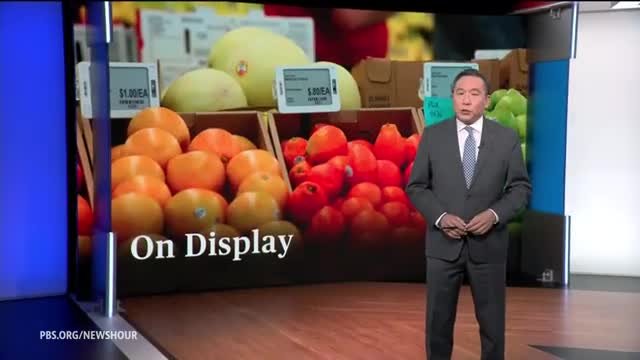Retailers embrace digital shelf labels to combat inflation

This article was created by AI summarizing key points discussed. AI makes mistakes, so for full details and context, please refer to the video of the full meeting. Please report any errors so we can fix them. Report an error »

Amid ongoing inflation concerns, retailers in the U.S. are increasingly adopting digital shelf labels, a technology that allows for rapid price updates on store items. This shift comes as many American households have been forced to cut back on routine purchases due to rising costs. Walmart has announced plans to implement these electronic labels in over 2,000 stores by 2026, joining other retailers like Kohl's, which has utilized this technology since 2015.
Digital shelf labels, which resemble traditional paper labels but feature small digital screens, can be updated remotely, often daily, using Bluetooth technology. This innovation not only streamlines the pricing process—reducing what once took a week to mere minutes—but also aims to cut down on paper waste by up to 40%. Retailers argue that these efficiencies could ultimately lead to cost savings for consumers.
However, the introduction of this technology raises concerns among consumer advocates about the potential for dynamic pricing, where prices could fluctuate based on demand, similar to surge pricing seen in ride-sharing services. While dynamic pricing is legal in the U.S., Walmart has stated it will not employ this strategy for everyday pricing, focusing instead on using the technology for promotions and discounts.
The move towards digital shelf labels is seen as part of a broader trend of modernization in retail, aimed at improving inventory management and responding more swiftly to market conditions. This could be particularly beneficial for perishable goods, allowing retailers to adjust prices quickly to encourage sales before expiration.
As retailers navigate the complexities of inflation and consumer expectations, the adoption of digital shelf labels represents a significant shift in how prices are managed in stores, with implications for both operational efficiency and customer experience.
Digital shelf labels, which resemble traditional paper labels but feature small digital screens, can be updated remotely, often daily, using Bluetooth technology. This innovation not only streamlines the pricing process—reducing what once took a week to mere minutes—but also aims to cut down on paper waste by up to 40%. Retailers argue that these efficiencies could ultimately lead to cost savings for consumers.
However, the introduction of this technology raises concerns among consumer advocates about the potential for dynamic pricing, where prices could fluctuate based on demand, similar to surge pricing seen in ride-sharing services. While dynamic pricing is legal in the U.S., Walmart has stated it will not employ this strategy for everyday pricing, focusing instead on using the technology for promotions and discounts.
The move towards digital shelf labels is seen as part of a broader trend of modernization in retail, aimed at improving inventory management and responding more swiftly to market conditions. This could be particularly beneficial for perishable goods, allowing retailers to adjust prices quickly to encourage sales before expiration.
As retailers navigate the complexities of inflation and consumer expectations, the adoption of digital shelf labels represents a significant shift in how prices are managed in stores, with implications for both operational efficiency and customer experience.
View full meeting
This article is based on a recent meeting—watch the full video and explore the complete transcript for deeper insights into the discussion.
View full meeting